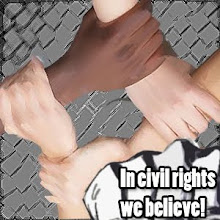Task 2: Children in the Darkness
Difficulty rating: *
Children in the Darkness
In this post, I will be moving on to the more in-depth analysis on Children in the Darkness. The poem will be analyzed accordingly based on Point of View, Situation and Setting, Language/Diction and Personal Response.
I. Speaker/POV
The speaker is evidently the author of the poem, who has a bird eye view/image of the situation. He relates his experiences in war to the poem, to depict the sad fates of the children in war. Essentially, his views are mostly based on social life, with a slight hint of politics.
II. Situation & Setting
The poem could have a few settings, depending on how you look at it. We can regard it as an allusion of the author’s war experiences in Vietnam, triggered by the news report and related to in the poem. On the other hand, we can regard it as a depiction of the child in the news report, with a few of his war experiences added in.
In the poem, it depicts the lives of children in war; how they are raised to fight and die eventually. It creates a sense of hopelessness, which is introduced in increasing levels. Some signs of contrast can be observed as well, more prominently from the third and fourth stanza.
Stanza form: Quantrain
III. Language & Diction
In the poem, the author utilizes several figurative writing devices to make the poem flow as well as to land emphasis on certain parts of the poem.
“There are children in the darkness
Who have not seen the light
There are children in the darkness
Who someone will teach to fight”
There is a use of pun in this stanza, whereby the words darkness and light represent something other than their literal meanings. The denotation of darkness would mean wickedness or evil. Hence, it hints at the background and quality of life of the children in war. These children are surrounded by soldiers, and with no one to teach them, they have learnt to survive the hard way. Other than that, the word light means radiance. However, the word light in the poem can mean happiness and salvation for them. Thus, there is a contrast between darkness and light.
“Chalk and blackboards will not be
To this door there is no key
From this life they can not flee
And these children are not free”
In this stanza, there is a use of metaphor, such as “To this door there is no key”. It depicts the life of the children in war and their sufferings as a door, whilst the key represents help and solutions. However, it states clearly in the poem that there is no key, which gives off a sense of pessimism, showing that there is no help for these children.
“Could we simply light a candle
Could we give them half a chance
Could we teach them how to read
Could we teach them how to dance”
This stanza compromises of mostly rhetorical questions, whereby the author questions the readers. For example, “Could we teach them how to dance” allows the author to question the reader, and makes the reader empathize with the children trapped in war. Other than that, there is also a use of pun. For example, “light a candle” represents something else other than its literal meaning. In the poem, it means to light up the child’s path, and give him guidance.
“Or will a war consume them
Their body and their soul
Will their life and blood be poured
Down some endless thirsty hole”
This stanza is rich in the use of metaphor and puns. In the first line of the stanza, the word “consume” means to devour something. It is an especially strong word, and in this poem, is used as a pun. Other than its literal meaning, this poem uses the word “consume” to describe how many children are being engulfed and wrecked by war, mentally and physically. Also, there is a use of metaphor in the third line of the stanza. There is a direct comparison between the life and blood of the children between water. In the poem, it is used to depict how the lives of children are easily lost. Furthermore, the phrase “endless thirsty hole” is another example of metaphor as it compares war with an endless and thirsty hole. It shows that war is endless and forever consuming life.
IV. Personal response
This poem depicts the hopelessness and life of the children trapped in war time. Through the use of metaphor and puns, it evokes reactions and sympathy from the reader. In the poem, it describes the sufferings of the children, and contrasts it with the lives of normal, school children. Personally, I feel that this poem is especially important in reminding us of the impacts of war. Many children are being sacrificed and consumed by war, when they could have a better life through education. When reading the poem, I can empathize with the children in war, and appreciate everything that I have now.



0 Comments:
Post a Comment
Subscribe to Post Comments [Atom]
<< Home